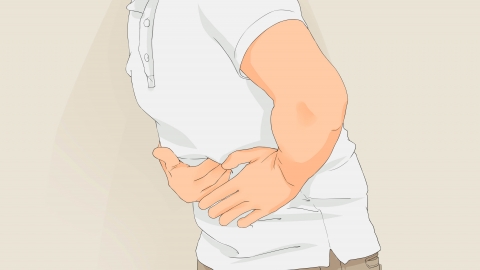Symptoms of radiation enteritis
In general, after receiving pelvic or abdominal radiotherapy, some patients may develop radiation enteritis, characterized primarily by abdominal pain, diarrhea, rectal bleeding, tenesmus, and intestinal obstruction. Timely recognition and intervention can reduce the risk of long-term complications. The specific manifestations are as follows:
1. Abdominal pain: Dull or colicky lower abdominal pain is most common, often worsening after meals due to mucosal congestion, ulceration, and fibrinous exudation. Pain may occasionally radiate to the lower back. During the acute phase, a low-residue, low-fat, warm soft diet is recommended, avoiding spicy foods and alcohol. Medications such as smectite powder, compound glutamine, or mesalazine may be taken orally under medical guidance to protect the mucosa and suppress local inflammation.

2. Diarrhea: Typically presents as watery or mucus-containing stools, occurring several to over ten times per day, caused by reduced absorptive surface area and increased intestinal motility. Mild cases can be managed with oral rehydration salts to maintain fluid and electrolyte balance. For frequent episodes or nocturnal diarrhea, short-term use of loperamide is appropriate, combined with probiotics such as Bifidobacterium or Bacillus licheniformis preparations to restore microbial balance.
3. Rectal bleeding: Blood in stool results from mucosal ulcers eroding blood vessels, sometimes appearing bright red in severe cases. Minor bleeding may be treated with Yunnan Baiyao capsules or Kangfuxin liquid as directed by a physician to promote healing. If symptoms of anemia such as dizziness or palpitations occur, immediate medical evaluation is required; endoscopic hemostasis or intravenous administration of prothrombin complex concentrate may be necessary.
4. Tenesmus: The distal rectum becomes easily irritated following radiation, causing frequent urges to defecate despite minimal output. Warm sitz baths can help relieve sphincter spasm. Medications such as sulfasalazine enteric-coated tablets, metronidazole tablets, or live bifidobacteria granules may be used under medical supervision to address both inflammation and gut microbiota imbalance.
5. Intestinal obstruction: Chronic fibrosis and scar contraction of the bowel wall may lead to luminal narrowing, manifesting as abdominal distension, vomiting, and cessation of flatus and bowel movements. Complete obstruction requires fasting, gastrointestinal decompression, and prompt surgical evaluation—procedures such as adhesiolysis or ostomy creation may be indicated.
Daily management emphasizes a low-residue, low-lactose diet with small, frequent meals, while limiting gas-producing foods such as legumes and carbonated beverages. Concurrent supplementation with vitamins A and D, as well as trace elements, helps prevent malnutrition. Patients with persistent symptoms or weight loss should return for follow-up, where specialists can adjust anti-inflammatory, nutritional, or surgical treatment plans. During recovery, gentle walking and clockwise abdominal massage may aid intestinal motility, though heavy lifting and strenuous activities should be avoided.





